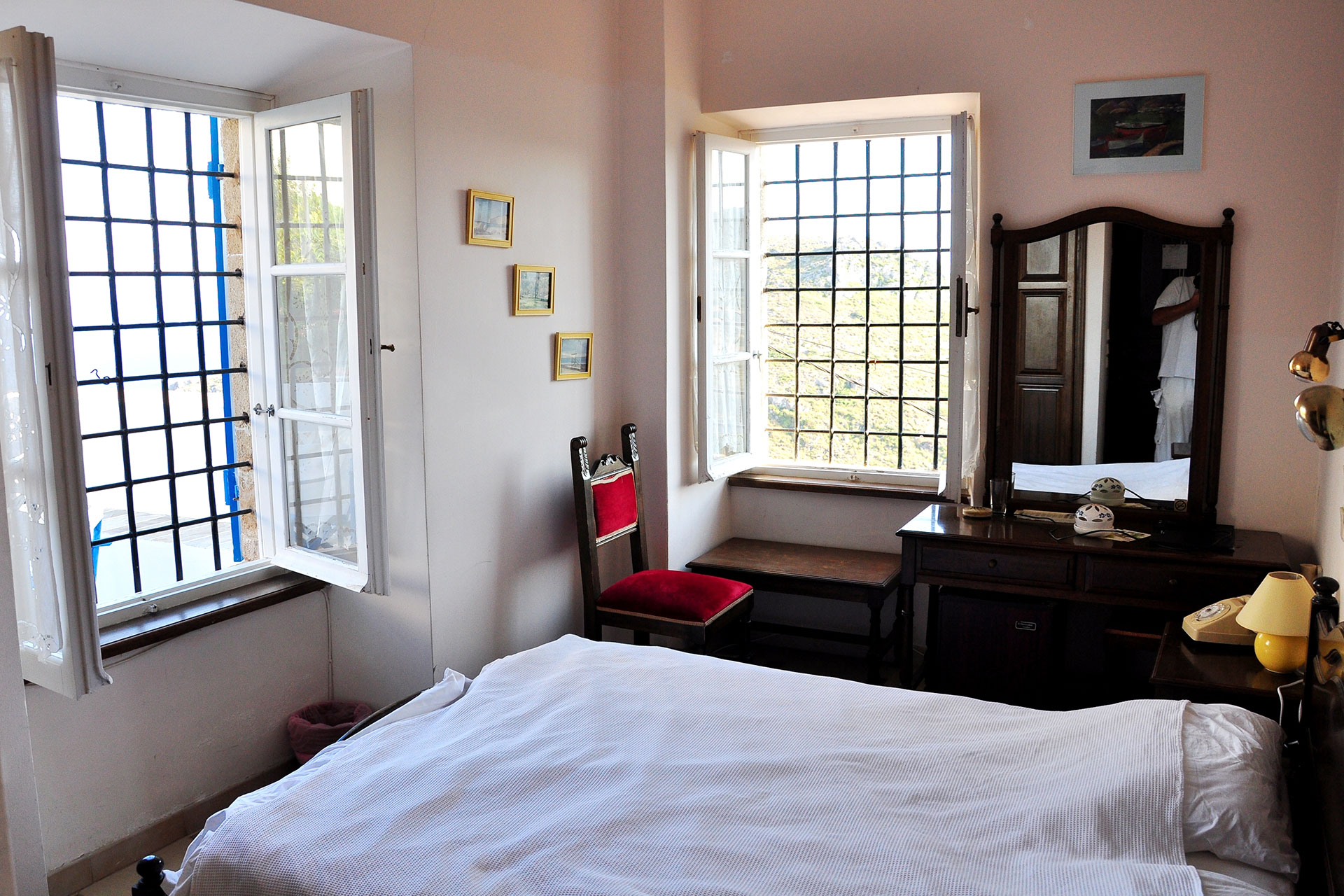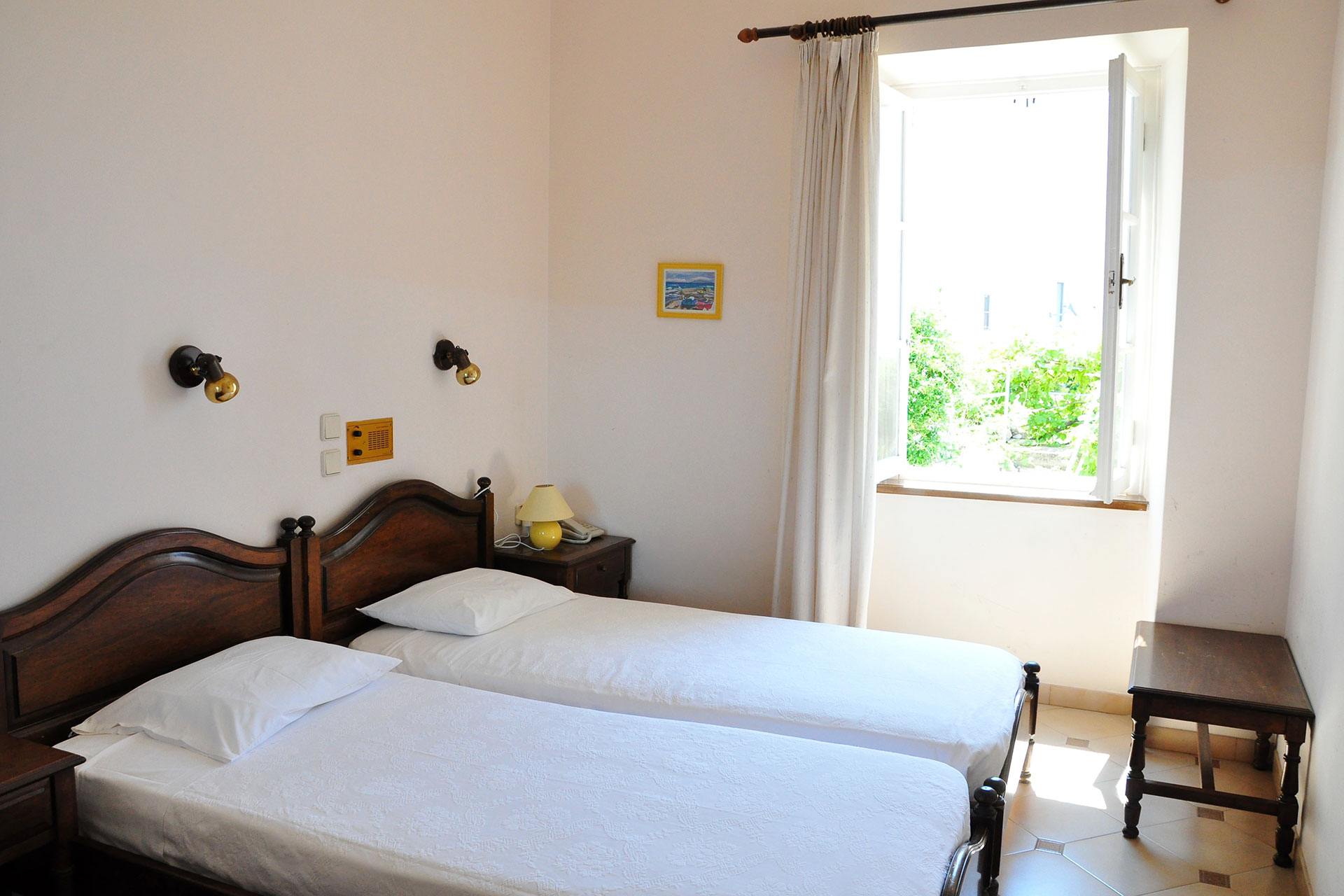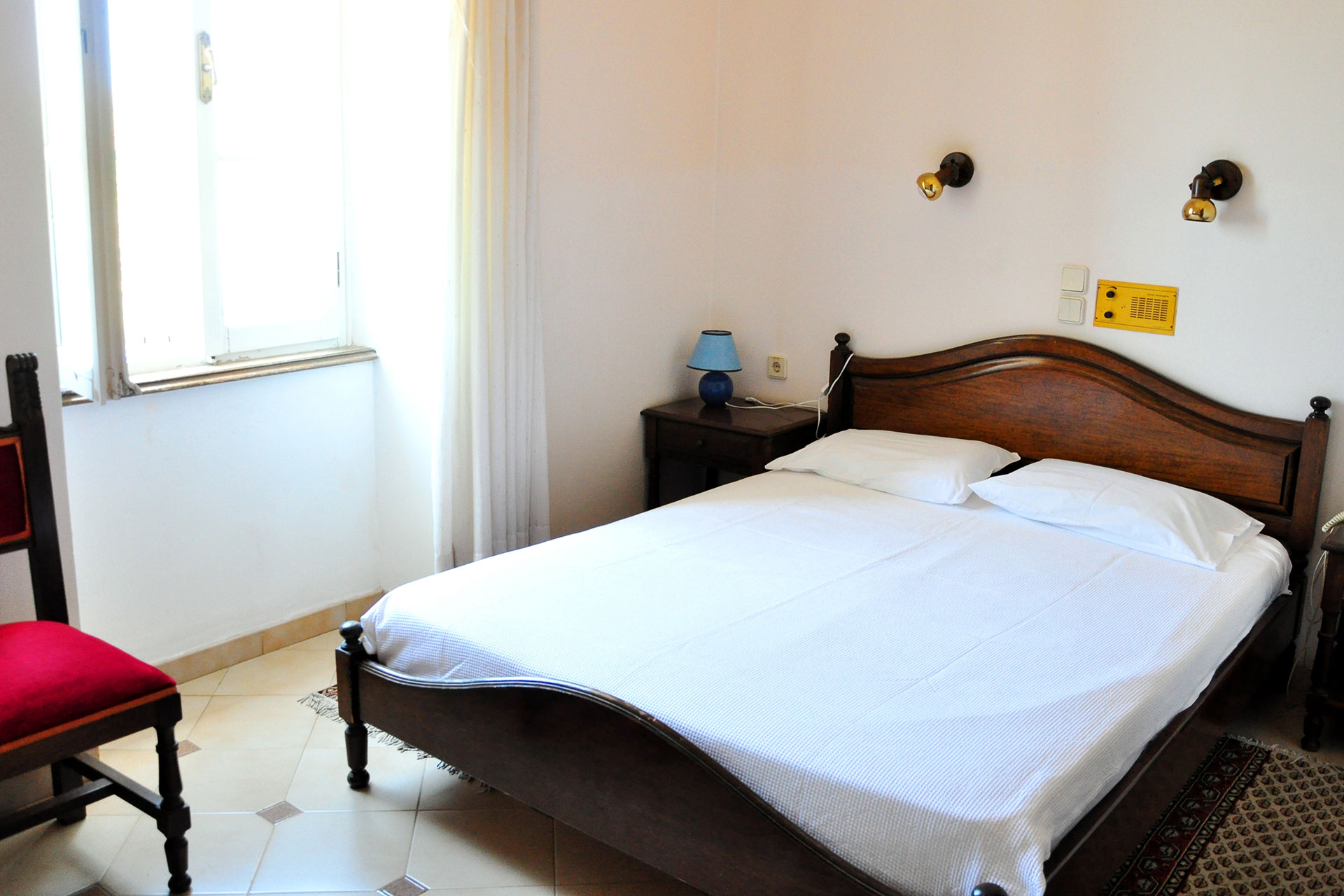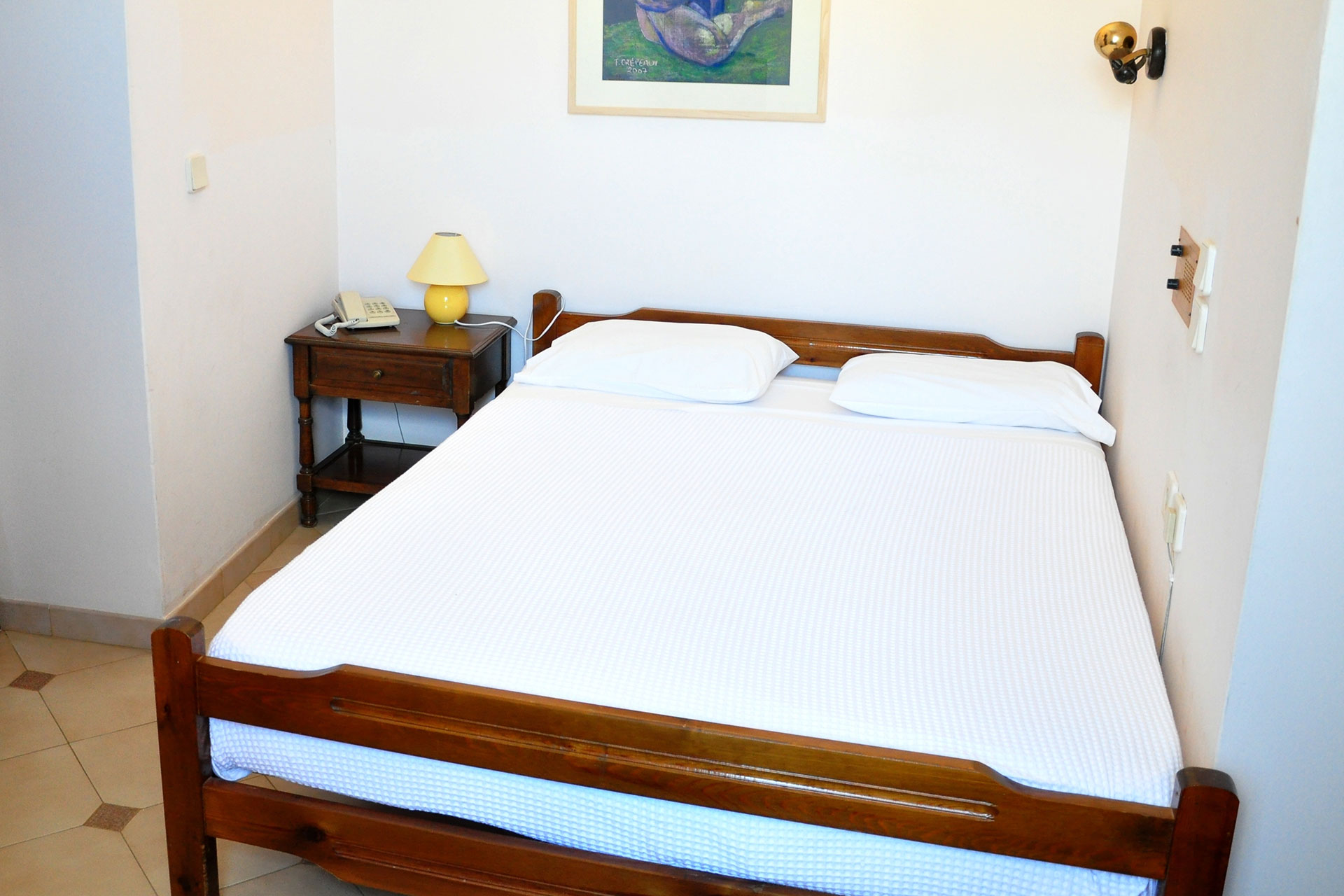
Hotel Margarita
Hotel Margarita
Welcome to Hotel Margarita, a historical house that was built in 1840 by Nicolas Staïs, member of one of the aristocratic families of Kythira.
The Hotel Margarita is a typical patrician house, like the other patrician houses situated on the main street of Chora and around the Kastro (Castle).
In 1922, the house became the seat of the Diocese of Kythira and Antikythira, and later on a branch of the National Bank of Greece. The Staïs family eventually sold this elegant home.
In 1990, after a complete renovation, the house was turned into the Margarita Hotel.
Since 2002, the Hotel Margarita is run by two Frenchmen, Francois Crépeaux and Frédéric Ferrière.

An oasis in the heart of Chora
Built in the heart of Chora, the capital of the island, the Hotel Margarita is situated in a delightful labyrinth of flowery alleys. The hotel's imposing size contrasts with the village's small white houses. Its clean lines, white walls and blue windows exude charm and serenity.
The two hotel terraces overlook the sea and surrounding countryside, as well as the old Venetian fortress, the Kastro. On our terraces, you can enjoy a breakfast buffet as well as refreshments during the day or evening.

Discover Chora
Leaving the hotel, you instantly find yourself in the heart of Chora. The capital of the island is built perfectly balanced between two hill peaks. The main street, only a few meters from the hotel reception, will lead you directly to the great fortress of Chora, where you can admire a breathtaking view of Kapsali Bay and the Aegean Sea. On fine days, you can clearly distinguish the islands of Antikythira and Crete.
A stroll in Chora invites you to discover more about the particular way of life of Kythira, characterized by a combination of Greek and Italian influences.














